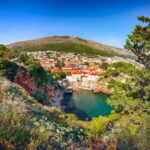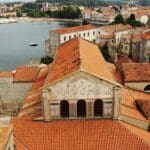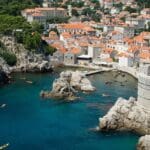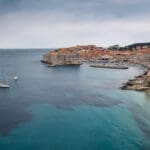Croatia has been gaining popularity as a tourist destination in recent years. And with its stunning beaches, charming towns, and rich history, that should be no surprise! From the crystal-clear waters of the Adriatic Sea to the breathtaking Plitvice Lakes National Park, there’s something for everyone in this beautiful country.
However, with so many things to see and do, it can be difficult to decide when to plan your visit. This blog aims to help you determine the best time of year to visit Croatia based on weather, crowds, and prices so that you can make the most of your trip.
Whether you’re looking to soak up the sun on the beach or explore the country’s cultural treasures, we’ve got you covered.
And if you plan to visit Dubrovnik on your trip to Croatia (and we strongly recommend you do), consider joining Rewind Dubrovnik for one of our private Dubrovnik boat tours or Dubrovnik land tours.
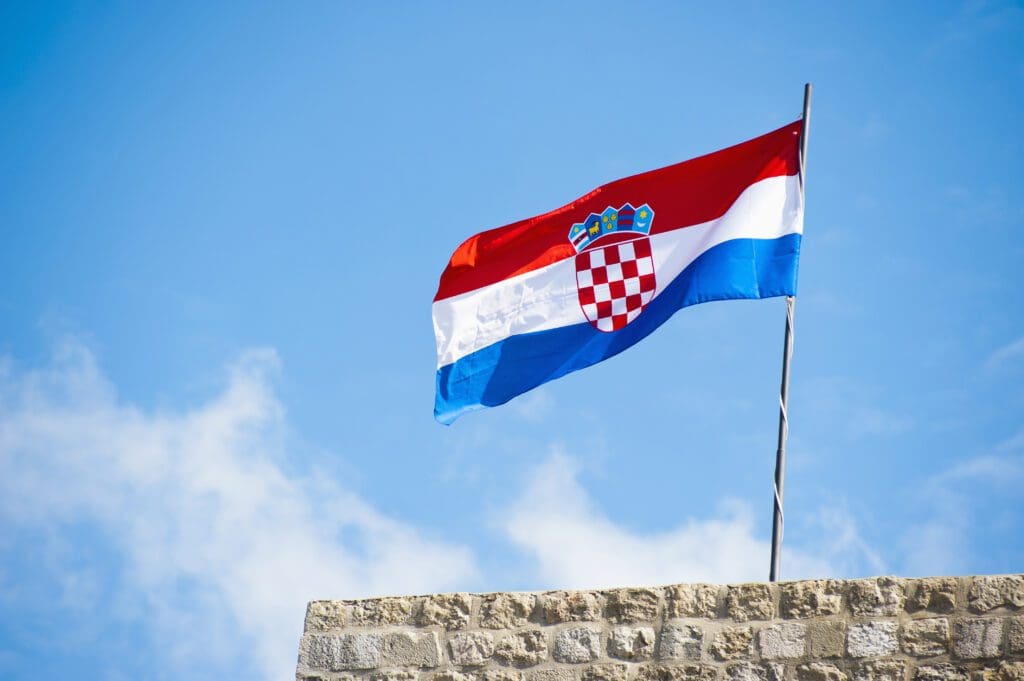
Visiting Croatia in the Summer
Summer is undoubtedly the most popular time of year to visit Croatia, and for good reason. With warm temperatures, long sunny days, and a lively atmosphere, it’s the perfect time to enjoy the country’s stunning coastline and outdoor activities. One of the biggest draws of visiting in the summer is the opportunity to swim in the crystal-clear waters of the Adriatic Sea. (And as a provider of private boat tours, we know all about paradisal coastal landscapes – look at our Full-Day Tour to the Elafiti Islands.)
Croatia’s beaches are renowned for their beauty, and there are plenty of options to choose from, whether you’re looking for a secluded cove or a bustling beach resort. In addition to the beaches, summer is also a great time to explore Croatia’s picturesque towns and cities. The streets are bustling with activity, and there are plenty of festivals and events to enjoy. For example, the Dubrovnik Summer Festival takes place every year in July and August, featuring theatre, music, and dance performances in the city’s historic streets and squares.
However, there are some drawbacks to visiting Croatia in the summer. The biggest issue is the crowds. Popular destinations like Dubrovnik and Split can get very crowded during peak season, making it difficult to enjoy the experience fully. Another drawback is the higher prices. With the influx of tourists, accommodation and other costs tend to rise during summer, making it a more expensive time to visit.
Overall, while the summer months are undeniably popular for a reason, it’s important to be aware of the crowds and higher prices. If you do choose to visit in the summer, it’s a good idea to book accommodation and activities well in advance to avoid disappointment.
We always keep the crowds in mind when planning our tours. It’s why our Boat Tours to Dubrovnik’s Blue Cave depart at times that won’t see you fighting for space to swim!
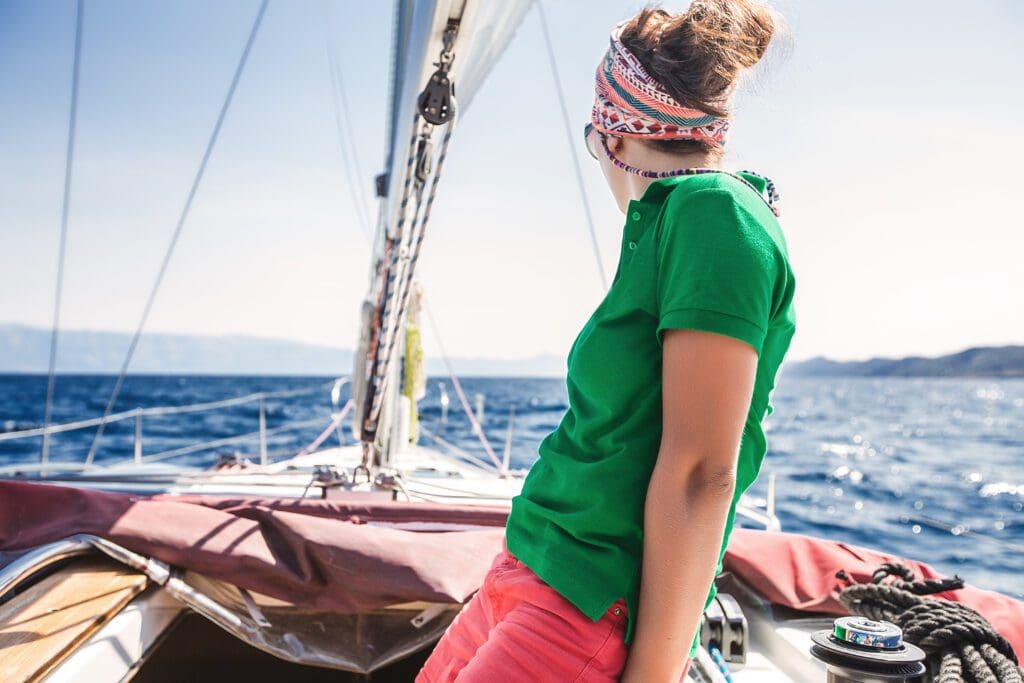
Temperature During the Summer in Croatia
During the summer season, Croatia experiences hot and dry weather, with average temperatures ranging from 25°C to 30°C (77°F to 86°F). In coastal areas, humidity levels can also be high, but refreshing sea breezes make the heat more bearable. The Adriatic Sea is warm and perfect for swimming, with temperatures ranging from 23°C to 27°C (73°F to 81°F).
Popular Croatia Tourist Attractions During Summer
The summer season in Croatia is the perfect time to explore the country’s stunning coastline and beautiful islands. Popular tourist attractions during this season include:
- Dubrovnik: Known as the “Pearl of the Adriatic,” Dubrovnik is a UNESCO World Heritage site with stunning architecture, picturesque streets, and beautiful beaches. Learn more by reading our Why is Dubrovnik Famous? blog.
- Hvar: Hvar is a popular island destination known for its crystal-clear waters, luxurious resorts, and vibrant nightlife. We offer Private Speedboat Travel from Dubrovnik to Hvar (and vice versa).
- Plitvice Lakes National Park: This national park is a natural wonderland of waterfalls, lakes, and forests and is an ideal destination for hiking and exploring.
- Zadar: Zadar is a charming coastal city with historical landmarks, such as the Roman Forum and the famous Sea Organ.
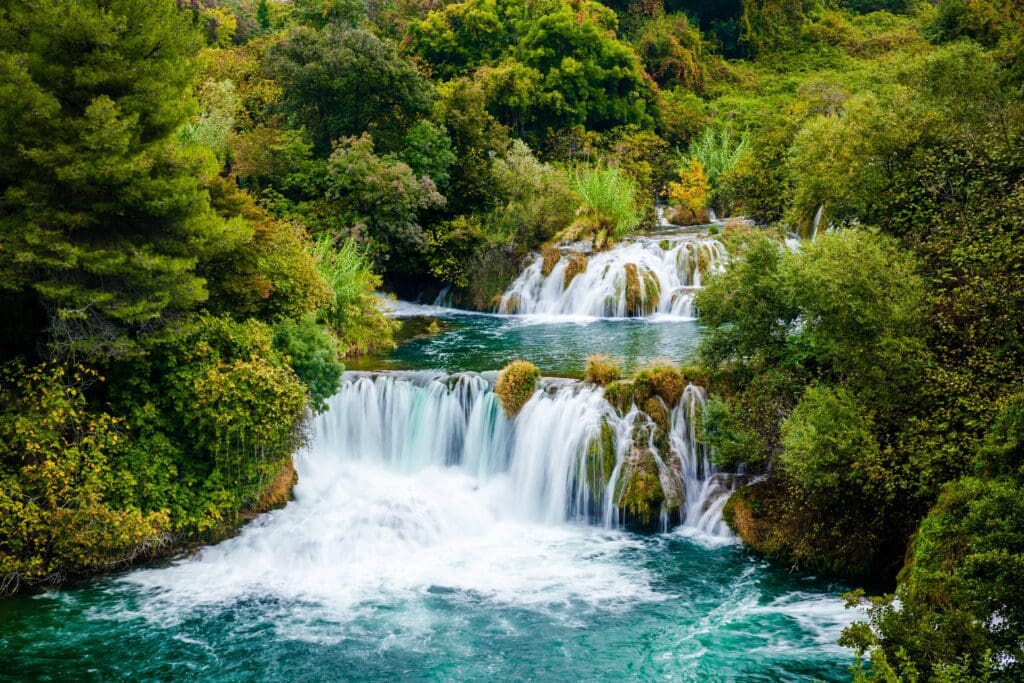
Pros and Cons of Visiting Croatia in the Summer
Pros:
- Ideal weather for swimming, sunbathing, and water activities.
- Longer days mean more time to explore and enjoy the outdoors.
- A wide range of activities and events, including festivals, concerts, and outdoor markets.
Cons:
- Crowded tourist spots, especially in popular destinations.
- Higher prices for accommodation and flights.
- Hot temperatures can be uncomfortable for some visitors.
In conclusion, visiting Croatia during the summer offers various attractions and activities, particularly if you love the beach and the outdoors. However, you should be prepared for the crowds and higher prices, so plan accordingly. Summer is also the best time to try out our Dubrovnik zipline experience!
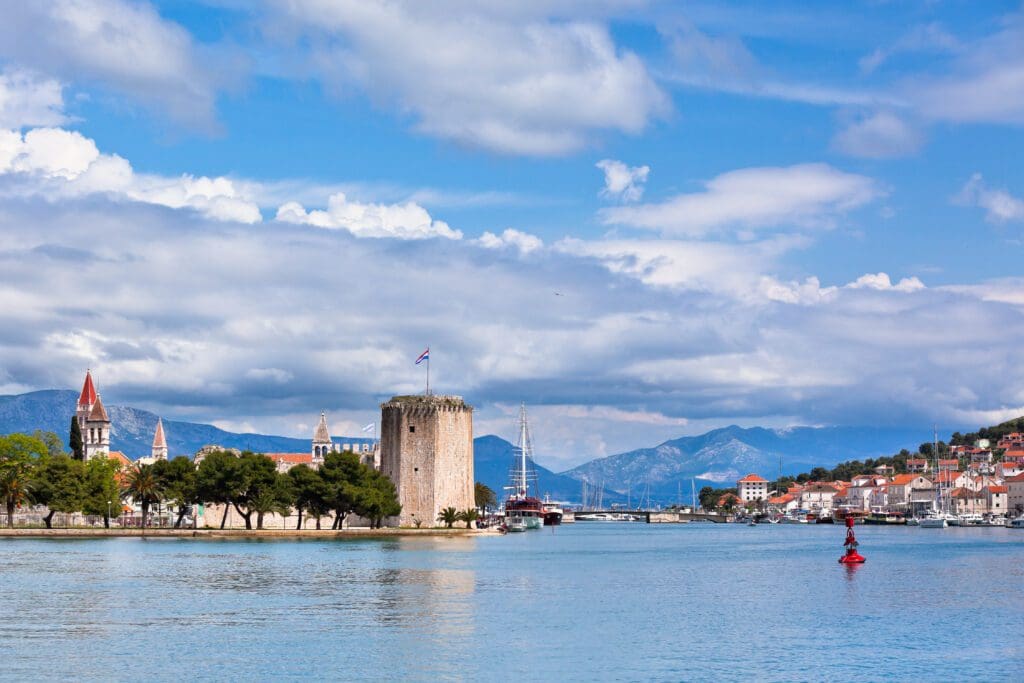
Visiting Croatia During the Shoulder Seasons
If you’re looking to avoid the crowds and enjoy milder temperatures, then visiting Croatia during the shoulder seasons of April-May and September-October may be the perfect time for you. During these months, you can still enjoy many of the country’s attractions and activities, but with fewer tourists.
Weather During the Shoulder Seasons
During the shoulder seasons, Croatia experiences mild and pleasant weather, with average temperatures ranging from 15°C to 20°C (59°F to 68°F). In coastal areas, temperatures can reach up to 25°C (77°F), making it an ideal time for swimming and water activities. However, it’s worth noting that the sea temperature may still be a bit chilly in April and May.
Popular Tourist Attractions During the Shoulder Seasons
The shoulder seasons are a great time to explore Croatia’s natural beauty and cultural landmarks. Popular tourist attractions during this time of year include:
- Plitvice Lakes National Park: This national park is a must-visit during the shoulder seasons as the colors of the autumn leaves, and the reflection of the lakes create a stunning natural spectacle.
- Dubrovnik: Although this destination can still be busy during the shoulder seasons, you’ll find fewer tourists and lower prices than in the summer. The cooler temperatures also make it easier to explore the city’s historic sites without feeling too hot.
- Istria: This peninsula in the northwest of Croatia is famous for its picturesque hilltop towns, wine routes, and gourmet food. During the shoulder seasons, you can enjoy the stunning scenery without the summer crowds.
Pros and Cons of Visiting Croatia in the Shoulder Seasons
Pros:
- Milder temperatures make it easier to explore the cities and natural attractions without feeling too hot.
- Fewer tourists mean less crowded attractions and lower prices for flights and accommodation.
- You may have more opportunities to interact with the locals and experience authentic Croatian culture.
Cons:
- Some attractions and activities, such as beach activities and water sports, may be limited due to cooler temperatures.
- Some restaurants, shops, and attractions may have limited hours or be closed altogether, especially in smaller towns.
- Weather can be unpredictable, and you may experience rain or wind.
In conclusion, the shoulder seasons of April-May and September-October offer a great time to visit Croatia if you want to avoid the crowds and enjoy milder temperatures. With plenty of attractions and activities still available, you can explore Croatia’s stunning landscapes and cultural heritage without the hustle and bustle of the peak tourist season.

Visiting Croatia in the Winter
While Croatia may not be the first destination that comes to mind for a winter vacation, the country offers a unique experience during the winter season from November to March. With fewer tourists and lower prices, Croatia in winter can be a great option for travelers looking for a peaceful and authentic experience.
Weather During Winter Season
During the winter season, Croatia experiences colder temperatures, with average temperatures ranging from 5°C to 10°C (41°F to 50°F). Coastal areas are generally milder than inland, with temperatures ranging from 10°C to 15°C (50°F to 59°F). It’s worth noting that some parts of Croatia, such as Zagreb and Gorski Kotar, can experience snowfall, creating a winter wonderland.
Popular Tourist Attractions During Winter Season
While some attractions may have shorter opening hours or be closed during the winter season, there are still plenty of things to see and do in Croatia. Popular tourist attractions during this time of year include:
- Zagreb: Croatia’s capital city comes alive during winter with Christmas markets, ice skating rinks, and outdoor concerts. You can also explore the city’s museums and galleries without the summer crowds.
- Plitvice Lakes National Park: Although the waterfalls and lakes may be frozen, visiting the park during winter offers a unique and beautiful experience. The snow-covered trees and frozen lakes create a stunning winter landscape.
- Skiing: Croatia has several ski resorts, such as Platak and Sljeme, that offer skiing and snowboarding opportunities during the winter season.
Pros and Cons of Visiting Croatia in the Winter Season
Pros:
- Fewer tourists mean less crowded attractions and lower prices for flights and accommodation.
- You can experience a unique and authentic side of Croatia during the winter season, such as Christmas markets and winter sports.
- You may have the opportunity to interact with the locals and experience Croatian hospitality and culture.
Cons:
- Some attractions may have limited opening hours or be closed during winter.
- Weather can be unpredictable, and you may experience rain or snowfall.
- Coastal areas may not be as lively or bustling as in summer.
While Croatia in winter may not be the first choice for many travelers, it offers a unique and peaceful experience for those looking for an authentic and budget-friendly getaway. With fewer tourists and plenty of attractions still available, you can explore Croatia’s winter landscapes and cultural heritage in a relaxed and peaceful atmosphere.
Visit Croatia When the Time is Right for You
In summary, the best time of year to visit Croatia depends on your interests, preferences, and travel goals. The summer season from June to August offers warm weather, vibrant nightlife, and a variety of water-based activities, making it an excellent choice for beach lovers and party-goers.
The shoulder seasons of April-May and September-October offer milder temperatures, fewer crowds, and lower prices, making it ideal for those who want to explore the country’s cultural and historical attractions. The winter season from November to March is a great option for those who enjoy winter sports and festivities.
When choosing the best time of year to visit Croatia, it’s important to consider factors such as your budget, interests, and preferences. You should also consider the weather conditions, the crowds, and the availability of accommodations and activities.
Croatia offers stunning natural beauty, rich history, delicious food, and warm hospitality regardless of the time of year. Each season offers its unique charm and experiences. Whether you’re visiting during the peak tourist season or the quieter off-season, there is always something to see and do in Croatia. So don’t hesitate to plan your trip and discover what this beautiful country offers.
If you are visiting Dubrovnik as part of your trip, please contact us with any questions.
